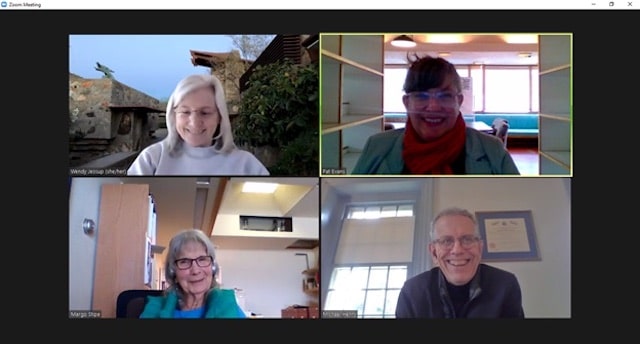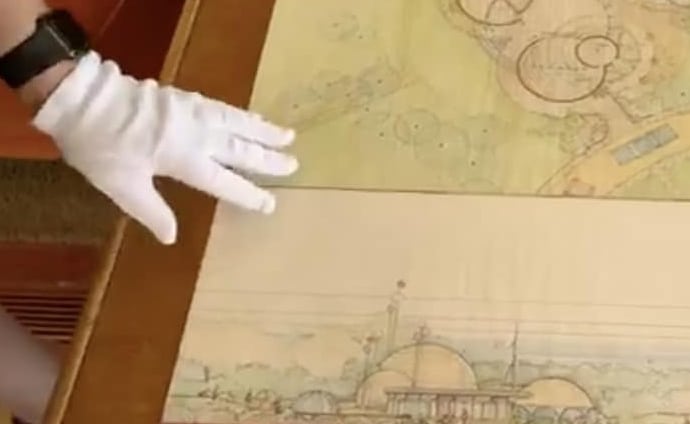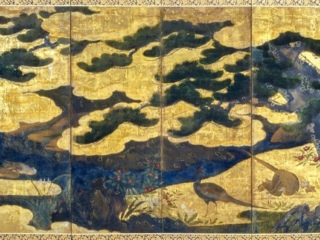
Caring for the Frank Lloyd Wright Collection
Pat Evans | Jan 15, 2021
Frank Lloyd Wright Foundation’s Registrar Pat Evans discusses aspects of caring for the thousands of objects that make up Frank Lloyd Wright’s collection during the pandemic.
If you’ve watched the Home Edit or Marie Kondo on Netflix, you know how important it is to maximize the space you have to keep your books or shoes or boxes of cereal easy to find and use. Now imagine that you’ve got 1000s of items—some that belonged to Frank Lloyd Wright and vary in size and material including Japanese woodbock prints, sculpture, paintings, furniture, textiles, and ceramics—all important and all requiring the right space and the right housing materials to keep them safe.
This is the challenge facing the Collections Department at the Frank Lloyd Wright Foundation.
The work began in 2018 when, funded by an IMLS grant, we had Wendy Jessup, a preventive conservator and Michael Henry, an architect and engineer, come to Taliesin West for a week. They combed through our storage spaces, took photographs, asked questions, and prepared a report on what we were doing well and how we could improve our Collections storage. One of their recommendations was that we apply for a National Endowment for the Humanities (NEH) Planning Grant called Sustaining Cultural Heritage Collections (SCHC) to bring both consultants back to prepare a detailed space plan. And we were successful!


Our plan was for Michael and Wendy to come back to Taliesin West in March 2020 for a full week of detailed measuring and analysis, to determine what building improvements needed to be made, while counting and estimating what types of shelving, boxes, and other materials were needed. But then came the pandemic. We postponed the site visit time and again, until we finally realized that it just wasn’t going to happen in a traditional manner. We decided to do a virtual site visit. Rather than having Wendy and Michael stay with us for another week, we turned to Zoom and a cell phone, selfie stick, and ring light.

A virtual Zoom meeting between the Frank Lloyd Wright Foundation Collections staff Pat Evans (top right) & Margo Stipe (bottom left) and preventive conservator Wendy Jessup (top left) and Michael Henry, architect and engineer (bottom right).
We found if they had the floorplans in front of them, and if I provided directions “I’m looking right” or “I’m facing the door” they could stay oriented in the space. At times I felt like a video game character being given directions (“Can you look to your right?” or “What’s on that shelf?”). Narration and communication were key. They recorded each of these seven Zoom tours so they could isolate screen shots to better count boxes, or rewind to admire my “professional” tracking shots.
Thanks to the National Endowment for the Humanities’ grant, we now have our renovation and storage plans in hand. We are actively looking for support so that we can continue to execute these plans.
Financial support and donations are critical in our important ongoing collection care work as we preserve the Frank Lloyd Wright legacy at Taliesin West in Scottsdale, AZ and Taliesin in Spring Green, WI.




